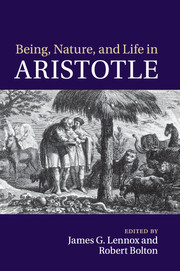36 results
Scoping article: research frontiers on the governance of the Sustainable Development Goals
- Part of
-
- Journal:
- Global Sustainability / Volume 7 / 2024
- Published online by Cambridge University Press:
- 24 January 2024, e7
-
- Article
-
- You have access
- Open access
- HTML
- Export citation
What Can Welfare Stigma Do?
-
- Journal:
- Social Policy and Society / Volume 21 / Issue 4 / October 2022
- Published online by Cambridge University Press:
- 11 July 2022, pp. 632-645
- Print publication:
- October 2022
-
- Article
-
- You have access
- Open access
- HTML
- Export citation
Some Useful Sources
-
- Journal:
- Social Policy and Society / Volume 21 / Issue 4 / October 2022
- Published online by Cambridge University Press:
- 11 July 2022, pp. 701-702
- Print publication:
- October 2022
-
- Article
-
- You have access
- HTML
- Export citation
Introduction: Interrogating Welfare Stigma
-
- Journal:
- Social Policy and Society / Volume 21 / Issue 4 / October 2022
- Published online by Cambridge University Press:
- 21 March 2022, pp. 627-631
- Print publication:
- October 2022
-
- Article
- Export citation
Australian square kilometre array pathfinder: I. system description
- Part of
-
- Journal:
- Publications of the Astronomical Society of Australia / Volume 38 / 2021
- Published online by Cambridge University Press:
- 05 March 2021, e009
-
- Article
-
- You have access
- HTML
- Export citation
Chapter 6 - Technê and Empeiria
-
-
- Book:
- Productive Knowledge in Ancient Philosophy
- Published online:
- 14 January 2021
- Print publication:
- 04 February 2021, pp 131-165
-
- Chapter
- Export citation
Chapter 12 - The Search for Principles in Aristotle
- from Part IV - Methodology in Aristotle’s Generation of Animals
-
-
- Book:
- Aristotle's <I>Generation of Animals</I>
- Published online:
- 24 November 2017
- Print publication:
- 11 January 2018, pp 227-248
-
- Chapter
- Export citation
Chapter 7 - The origins of Aristotle’s natural teleology inPhysics II
-
-
- Book:
- Aristotle's <I>Physics</I>
- Published online:
- 05 September 2015
- Print publication:
- 27 August 2015, pp 121-143
-
- Chapter
- Export citation
The Australian Square Kilometre Array Pathfinder: System Architecture and Specifications of the Boolardy Engineering Test Array
-
- Journal:
- Publications of the Astronomical Society of Australia / Volume 31 / 2014
- Published online by Cambridge University Press:
- 13 November 2014, e041
-
- Article
-
- You have access
- Open access
- HTML
- Export citation
1 - Intuition in Aristotle
- from Part I - Intuition in Western Philosophy
-
-
- Book:
- Rational Intuition
- Published online:
- 05 September 2014
- Print publication:
- 25 August 2014, pp 39-54
-
- Chapter
- Export citation
Contributors
-
-
- Book:
- Rational Intuition
- Published online:
- 05 September 2014
- Print publication:
- 25 August 2014, pp vii-viii
-
- Chapter
- Export citation
Findings from an online behavioural weight management programme provided with or without a fortified diet beverage
-
- Journal:
- British Journal of Nutrition / Volume 111 / Issue 2 / 28 January 2014
- Published online by Cambridge University Press:
- 07 August 2013, pp. 372-379
- Print publication:
- 28 January 2014
-
- Article
-
- You have access
- HTML
- Export citation
Contributors
-
-
- Book:
- The Development of Dialectic from Plato to Aristotle
- Published online:
- 05 December 2012
- Print publication:
- 01 November 2012, pp vii-viii
-
- Chapter
- Export citation
Chapter 11 - The Aristotelian elenchus
- from Part III - Dialectical methodology
-
-
- Book:
- The Development of Dialectic from Plato to Aristotle
- Published online:
- 05 December 2012
- Print publication:
- 01 November 2012, pp 270-295
-
- Chapter
- Export citation
Contributors
-
-
- Book:
- Adaptive Technologies for Training and Education
- Published online:
- 05 March 2012
- Print publication:
- 20 February 2012, pp xi-xii
-
- Chapter
- Export citation
2 - Biology and metaphysics in Aristotle
-
-
- Book:
- Being, Nature, and Life in Aristotle
- Published online:
- 06 December 2010
- Print publication:
- 18 November 2010, pp 30-55
-
- Chapter
- Export citation
Preface
-
- Book:
- Being, Nature, and Life in Aristotle
- Published online:
- 06 December 2010
- Print publication:
- 18 November 2010, pp vii-vii
-
- Chapter
- Export citation

Being, Nature, and Life in Aristotle
- Essays in Honor of Allan Gotthelf
-
- Published online:
- 06 December 2010
- Print publication:
- 18 November 2010
General index
-
- Book:
- Being, Nature, and Life in Aristotle
- Published online:
- 06 December 2010
- Print publication:
- 18 November 2010, pp 282-289
-
- Chapter
- Export citation
Acknowledgments
-
- Book:
- Being, Nature, and Life in Aristotle
- Published online:
- 06 December 2010
- Print publication:
- 18 November 2010, pp xi-xi
-
- Chapter
- Export citation





